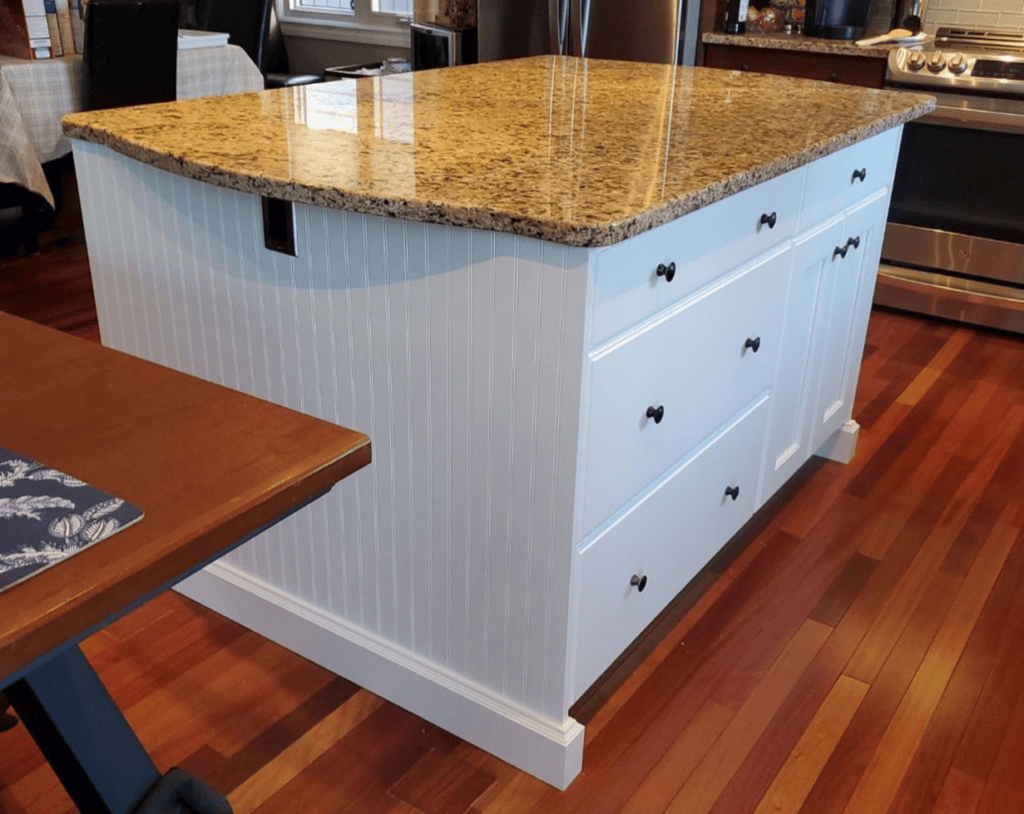Sprayed lacquer is considered one of the most popular high-end finishes for cabinets, banister rails, entertainment centres, and wood trim. The flawless and smooth finish of lacquer is deemed both an attractive and durable option for any interior wood surface, capable of adding vibrant colour and style to homes. However, as with all painted surfaces, flaws or damage may appear over time and with heavy use.
Fortunately, sprayed lacquer surfaces are easily retouched, as their colour is maintained over time by modern high-quality lacquers, which can be effortlessly sanded, matched, and repainted to attain a brand-new look. Cabinets in kitchens and bathrooms, facing considerable wear and tear over their lifetime, can benefit from the expertise of a reputable painting company that upholds sprayed lacquer finishes. Such companies possess the knowledge to address common issues and willingly undertake cabinet touch-ups or demonstrate the process.
This article will delve into the most common issue areas associated with painted cabinets, exploring the ease with which they can be fixed and suggesting ways to prevent the formation of touch-ups. Sprayed lacquer stands out as an excellent cabinet surface coating not only due to its durability but also because common issues are typically small and easily remedied.
Chips and Cracks: A Common Concern
Chipping and cracking, the most prevalent issue with painted cabinets, typically occur in high-traffic areas or frequently used cabinet doors. Lacquer, a solvent-based paint, forms a durable synthetic coating over wood surfaces. While excelling on large flat surfaces, lacquer’s less viscous nature, compared to thicker latex-based paints, makes fine edges and corners susceptible to chipping and cracking.
Hard corners of door edges and cabinet boxes may experience easier rubbing off or chipping than flat surfaces. Cracking may result from movement or adjustments in the wood surface, causing the cured lacquer to break. In “floating panel” style cabinet doors, where the middle panel is placed between separate pieces forming the door’s edge, cracks may appear at seams as the paint settles and the panel adjusts over time.
Fortunately, addressing chips and cracks is the easiest part of the touch-up process. Typically small, they can be quickly sanded down, filled, and retouched by hand. Awareness of these vulnerable spots allows for a gentler touch when necessary.
Caulking Lines and Separating Edges: Managing Settling Effects
Another common issue involves cracking or sinking along caulking lines or edges that separate over time due to settling. Paintable caulking is often used in cabinet paint jobs to fill seams, gaps, or separated edges, ensuring a clean and uniform appearance after painting. Some edges may experience sinking if the gap was particularly large.
Rectifying this issue involves re-caulking the line and touching up the paint. Caulking may also crack over time due to settling or movement in the house. Drastic weather changes and natural movements can cause ceiling lines or wall edges to shift and separate, reopening the gap. Fortunately, most instances of settling or shifting can be rectified by sealing the gap with more caulking and a quick paint touch-up. While caulking issues, prevalent in regions with temperature fluctuations, are common, they are easily fixable and often necessitate only one touch-up in a cabinet’s lifetime.
Painters can play a proactive role in preventing these issues by ensuring clean and tight caulking lines, minimizing sealant extension over the wall or cabinet edge to reduce stress on the filled gap.
Read More: How To Keep Your House Warm and Cosy
Long-term Durability: A Testament to Quality Lacquers
Modern, high-quality solvent-based lacquers exhibit remarkable durability on wood surfaces once they undergo full curing. While sprayed lacquer may dry within fifteen minutes, achieving its maximum long-term durability may take up to a month. A professionally sprayed lacquer kitchen can easily last a decade or more with only minor touch-ups needed along the way.
These lacquers resist discolouration or fading and should not peel away assuming proper priming and sanding during the initial application. Areas near appliances like dishwashers, stoves, or electric kettles may experience cracking or bubbling over prolonged exposure to heat or moisture. Unlike challenges associated with hard-to-match wood stains or peeled thermofoil, lacquer surfaces that have bubbled, warped, or cracked can be effortlessly sanded down and resprayed, even years after the initial painting.
Sprayed lacquer emerges as an excellent choice for cabinet finishes, offering outstanding long-term durability combined with the flexibility of easy touch-ups or fixes.
Also Read: Wood Kitchen Cabinets – Living in Nature
